- A stimulating conversation with Sunitha
ji Chandrakumar, founder of Raghu Leela School of Music. It includes how it started,
what is Nagara Sankeertane music, challenges and video links to their
performances.
I got to know about the Raghu Leela
School of Music on seeing videos of their performance at Bengaluru Airport and Sri
Ram Mandir, Ayodhya. A friend was nice enough to connect me with its founder
Smt Sunitha ji. I was curious to know how it all started and this form of light
and rhythmic music. Here is my chat with Sunitha ji.
Q1. Why did you start
Raghuleela Music and when?
Raghu Leela School of Music (RSLM)
officially started its journey on the auspicious day of Pundara Dasa Aradhane, on first February 2003, under the directive
of my Gurus.
Q2. Briefly, give your
background.
I was born into a joint family with
roots in Udupi district, to parents Late Sri Anantha Krishna Bhat and Smt.
Sumathi Bhat, as their seventh child. My father owned a hotel and was
originally from Mysuru. I was born, raised and educated in Mysuru.
On most evenings, it was customary at
home to sing bhajans in the presence of God and because my family were patrons
of art, my siblings and I were encouraged to learn classical music and dance. I
was formally trained in Indian classical music and dance.
Q3. What is the objective
of Raghuleela Music?
In Kannada literature, there is a
beautiful form in which music can be incorporated into the lyrics, which is
light music. Songs dedicated to Gods, verses of Shiva by sharanas and sharanes,
philosophy of Sufi saints, devotional songs by great poets, thematic songs,
folk songs and so on.
Songs composed by renowned composers
from earlier generations to this type of lyrics, is what was taught earlier at
RLSM as a part of light music education.
Post 2006, a distinct 'SCHOOL OF THOUGHT' with specially designed levels is being taught. These lessons comprise of not only songs composed by me but also include special workshops by expert artists from the music industry.
Q4. Why the name
Raghuleela?
Raghu Leela School of Music (RLSM), the
name is an ode to my music teachers Sri. S. G. Raghuram and Smt. H. R.
Leelavathi.
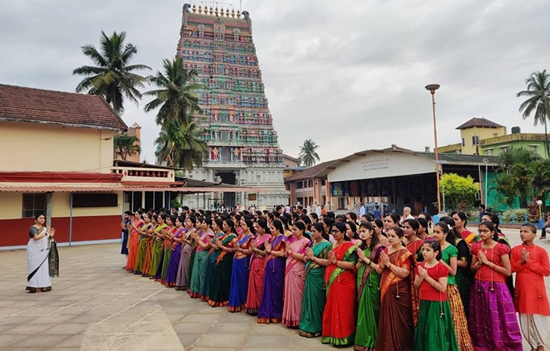 Performance at Sringeri Mutt. Courtesy Karnataka.com
Performance at Sringeri Mutt. Courtesy Karnataka.com
Q5. What type of dance and
music do you teach?
As the name suggests, it’s a music school. Except classical and film music, all forms of light music is taught here. Dance or musical drama is presented only when the thematic performance demands it.
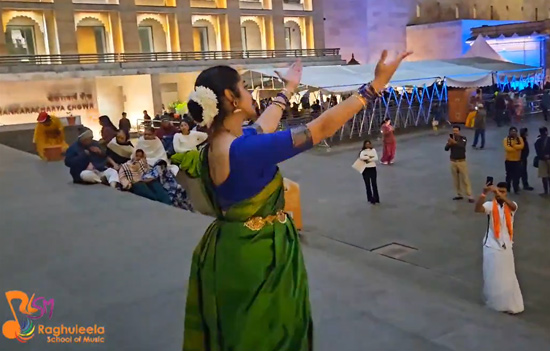 Performance at Kashi Vishwanath Corridor.
Performance at Kashi Vishwanath Corridor.
Q6. What is Sankeertane
music?
Only form of music taught at RLSM is
light music. This form includes devotional songs dedicated to various gods,
vachanas i.e., verses about Shiva by sharanas and sharanes, philosophy of Sufi
saints, songs by great poets, thematic songs, folk songs and so on.
Dance is choreographed and practiced by
students only as a part of performances at our thematic annual show.
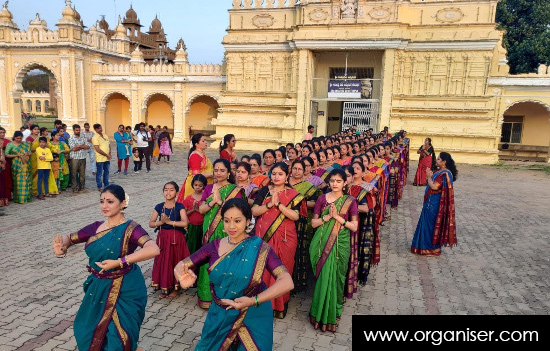 Performance at Mysore Palace.
Performance at Mysore Palace.
Q7. What is Nagara
Sankeertane music?
‘Sankeerthane’ is a way of invoking the God’s name. The practice of us singing songs in Gods name, during the early hours of dawn or dusk is ‘Nagara Sankeerthane’.
“It is an old custom where musicians and dancers walked through residential
areas while singing devotional songs. The custom gradually lost its luster over
time but it is being slowly brought back to life.”2
“Nagara Sankeerthane happens on the first Sunday of every month, wherein the students of RLSM walk from one temple to another while singing devotional songs for about an hour early in the morning.”1
Q8. How many students are there today?
RLSM has over 250 students who belong to
all age groups.
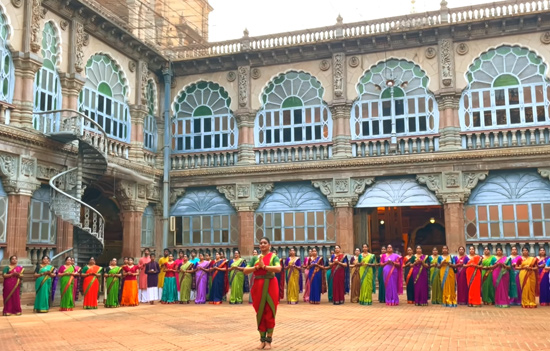 Performance at Mysore Palace in front of Queen Mother.
Performance at Mysore Palace in front of Queen Mother.
Q9. How many teachers are
there today?
Since the light music genre is lyrically dominant, I believe that justice can be done with teaching/lessons only if the composition's feelings are conveyed directly by me. No one else has been hired to teach at RLSM.
Q10. What are the
challenges in your journey?
Self-learning and growth play a critical
role in teaching. With learning and teaching, there exists a challenge to grow
at each level, and with each newer level there will newer challenges.
A big challenge is to hold onto the
roots of the light music genre while composing and designing new lessons to
suit the new generations.
 Performance at Sri Ram Mandir, Ayodhya.
Performance at Sri Ram Mandir, Ayodhya.
Q11. Tell us about your
experience of performing at Ram Mandir Ayodhya?
As the tradition goes, year on year
thousands of mahathmas have given
their time, efforts, and sacrificed for the holy land of Ramajanmabhoomi.
The divine opportunity to present our sankeerthane in front of Lord Rama was
truly the smallest Seva from our side. It was also the most meaningful
opportunity for us.
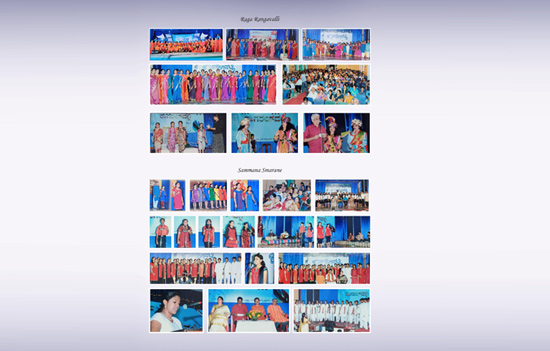 Raga Rangavalli
Raga Rangavalli
Q12. How many boys are
there in total students?
When teaching music, owing to the
difference in the pitch of male and female voices, most boys and men tend to
learn from male teachers and girls and women, from female teachers. The ratio
is usually 1:15, of male:female.
Q13. Students learn music
and dance part-time, is it?
RLSM School lessons are offered only
part-time, twice a week, in different batches at convenient timings.
RLSM Twitter handle @rlsmmysuru, RLSM on U Tube
Sunitha ji efforts to promote light music esp. Sankeerthane need to be appreciated. Her work must be promoted across the world.
To see videos
1. Performance at Mysore Palace
to Mother Queen Smt P Devi Wodeyar
2. Performance at Sringeri Mutt
4 minutes
3. Performance at Kashi – tweet
4. Jai Jai Hanuma 5 minutes
5. Nagara Sankeerthan on
streets of Mysore 5 minutes
6. Performance at Ram Mandir,
Ayodhya 1 minute
Also
read
1. Nagar
Sankeertane or Prabhat Feri: The Tale of Raghu Leela Music School, Mysuru
2. Interview
Karnataka.com